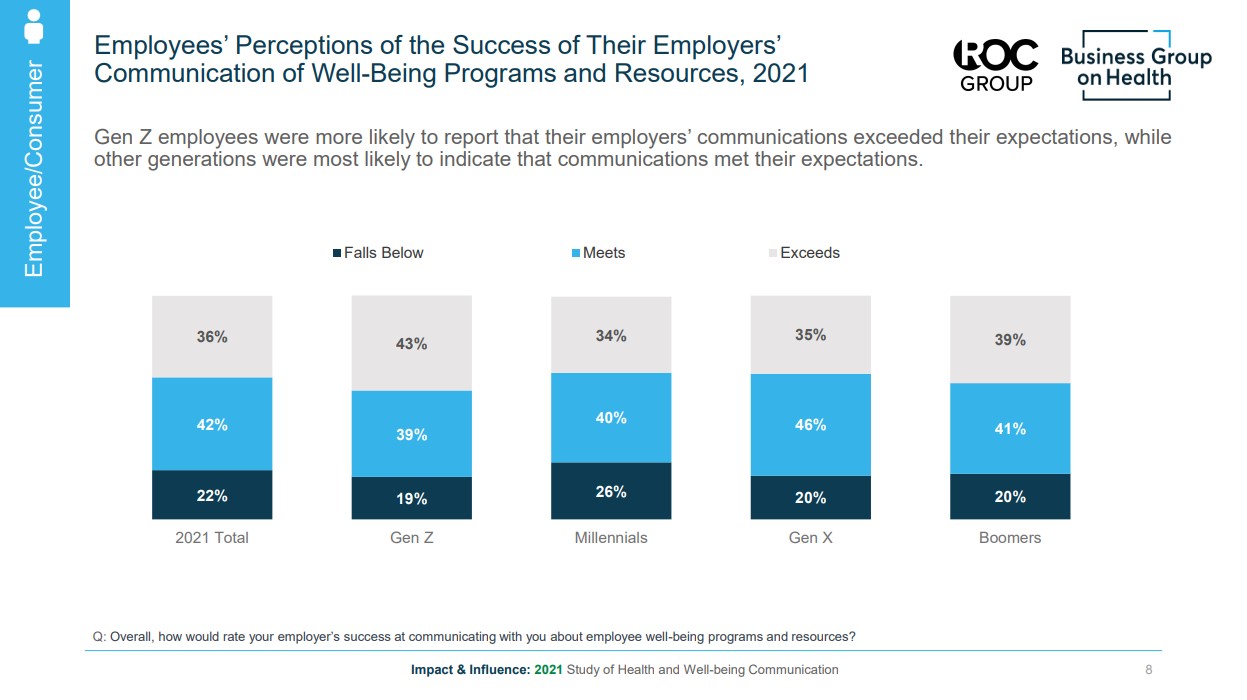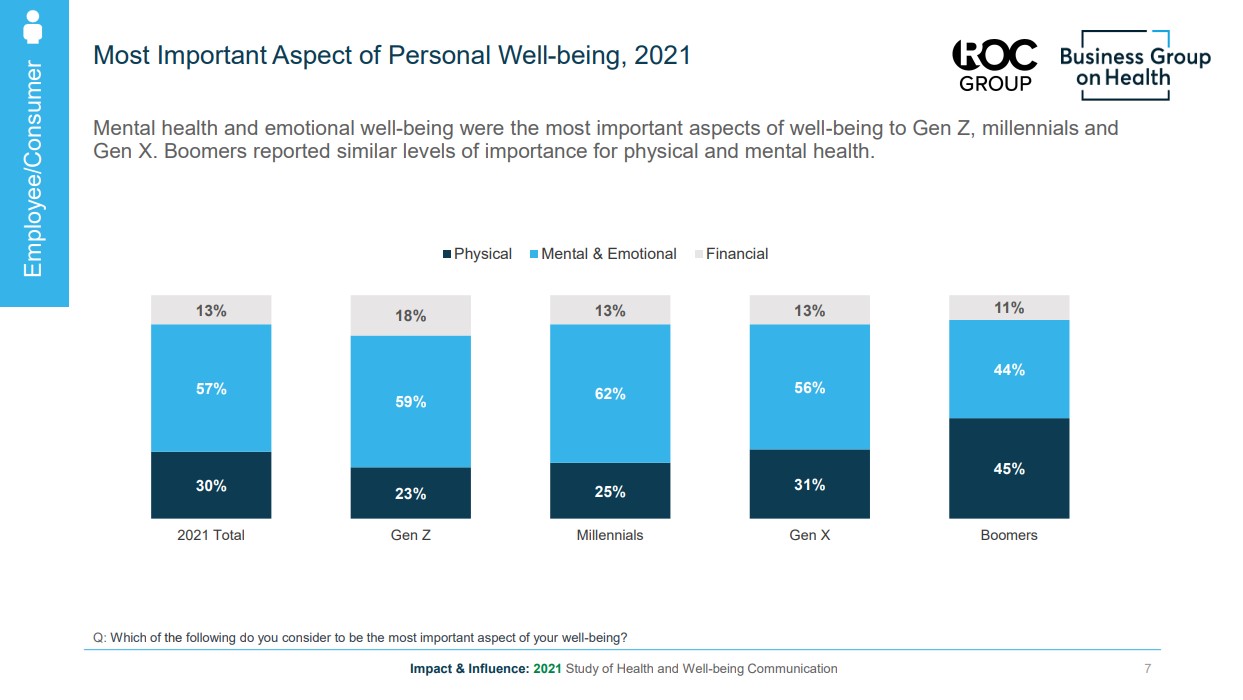In November 2021, Business Group on Health, along with its research partner ROC Group, released the findings from its Communication and Impact: 2021 Study of Health & Well-being Communication. This study explored the ways employers communicate with employees on health and well-being through a survey of 2,001 employees, a survey of 65 employers and interviews with leading HR/Benefit communicators. Recently, Business Group on Health sat down with two members of the research team, Brenna Shebel, Vice President, Business Group on Health, and Janice Burnham, Founder and CEO, ROC Group.

Brenna Shebel, Vice President, Business Group on Health

Janice Burnham, Founder and CEO, ROC Group
Business Group: What was the impetus for this research?
Brenna: It had been several years since the Business Group had done research on employer communications, pre-dating the transition from wellness programs focusing purely on physical health to a much broader view of well-being that encompasses emotional and financial well-being. One of our employer workgroups, the Leadership Forum on Employee Experience, challenged us to explore the best ways to communicate different “scenarios” – improving physical health, addressing emotional well-being, overcoming a financial challenge, signing up for a health plan and utilizing benefits throughout the year.
Jan: We also knew a lot about what employers were doing but had limited line-of-sight into who employees found to be motivating or which method of communications would get them to sit up and act. Employee research can be very powerful and informative for employers who may only have a general sense of what aspects of their communications may be working.
Business Group: What was surprising about the findings?
Jan: We hear a lot from employers who worry that their employees are not paying attention to their communications. But employees responded that they feel well-informed and their employer meets or exceeds expectations for communications. So, we did have an engaged group of employees who would give us meaningful feedback on well-being communications.
Brenna: I wasn’t expecting so much variation between scenarios. As in, employees would feel motivated by one type of messenger for their physical health but didn’t think that person would be helpful for financial well-being. It goes to show the importance of thoroughly designing communications to be more tailored to the situation and employee.

Business Group: Is there a messenger that employers are underusing?
Brenna: I’ve been really fascinated with how employee resource groups (ERGs)/affinity groups participate in designing and promoting health benefits and well-being initiatives. The connection among these groups’ members is so organic and powerful. Employees feel that ERGs can be very helpful during open enrollment, but not a lot of employers are leveraging these groups. It seems like a slam dunk to me – for HR/Benefits communicators to tailor their communications to address the specific needs of each group to increase awareness and access.
Business Group: Aside from opinions about communications, what else did you learn from the surveyed employees?
Jan: How incredibly valuable mental health is to employees. In fact, we asked employees which aspect of well-being—physical, mental or financial—was most important to them. Fifty-seven percent said mental health, while only 30% identified physical health. That illustrates the huge shift among workers in recognizing that well-being includes mind as well as body.
Business Group: What differences did you see between the five scenarios?

Brenna: We saw a lot! For messengers, employees responded very differently depending on what the theme was. In general, they were more motivated by people (peers, managers) for topics more personal to them (like physical and mental well-being), while they looked to those with expertise, whom they may not know personally, for guidance on health plans and benefits.
Jan: For communication methods, employees generally gravitated to financial incentives and personalized information to compel them to act. We saw some interesting differences for financial well-being communications: Employees really preferred information from outside vendors – like their 401(k) provider and financial well-being vendors.
Business Group: What should employers do with the study?
Jan: The employee data can inform an employer’s approach to well-being communications – knowing who and what motivates employees to take action. The results of the employer survey provide some solid benchmarking data on what other employers are doing.
Brenna: We also have some compelling generational data. If an employer is building a strategy to say, better engage baby boomers in physical well-being or better support Gen Zers who are picking a health plan for the first time, these data could give them an idea of how they view well-being, who gets them to take notice and which communications could result in concrete health improvement.
Learn more about the 2021 Study of Health & Well-being Communication.
Learn More ![]()
